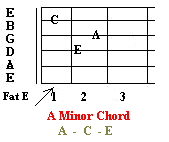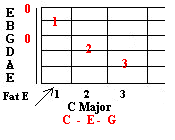Open position chords get their name from the root note of the chord. For example, the root note for the open position E chord would be the lowest E note. This E note would be the open Low E string or 6th string.
The root note for the open position A minor chord would be the lowest A note and would be the open A string or 5th string.
Look below at the chords. Notice the (0's) next to the strings. The (0's) shown next to the strings will be strummed open or not touched. When playing the A minor chord strum from the open A string down through the rest of the strings.
Once again, the A minor chord is made up of the A C E notes. Look at the images below. The first image shows the A minor chord with the fingers that play it and the second image shows the notes of the A minor chord. The open strings are the A and high E. Once again these open strings are not fretted, but strummed along with the fretted notes. Also notice that the open strings are part of the A minor chord, the A string (A note) and the high E string (E note).
| The 1 finger is on the first fret B string. The 2 finger is on the second fret D string and the 3 finger is on the G string second fret. Play this chord and try not to touch the strings that are left open. | |
| Listen |
|
|
 |
| The C major Chord is to the left. Fingers and the notes are shown. Practice this chord. It may take you some time to get comfortable with this. | |
| Listen |
|
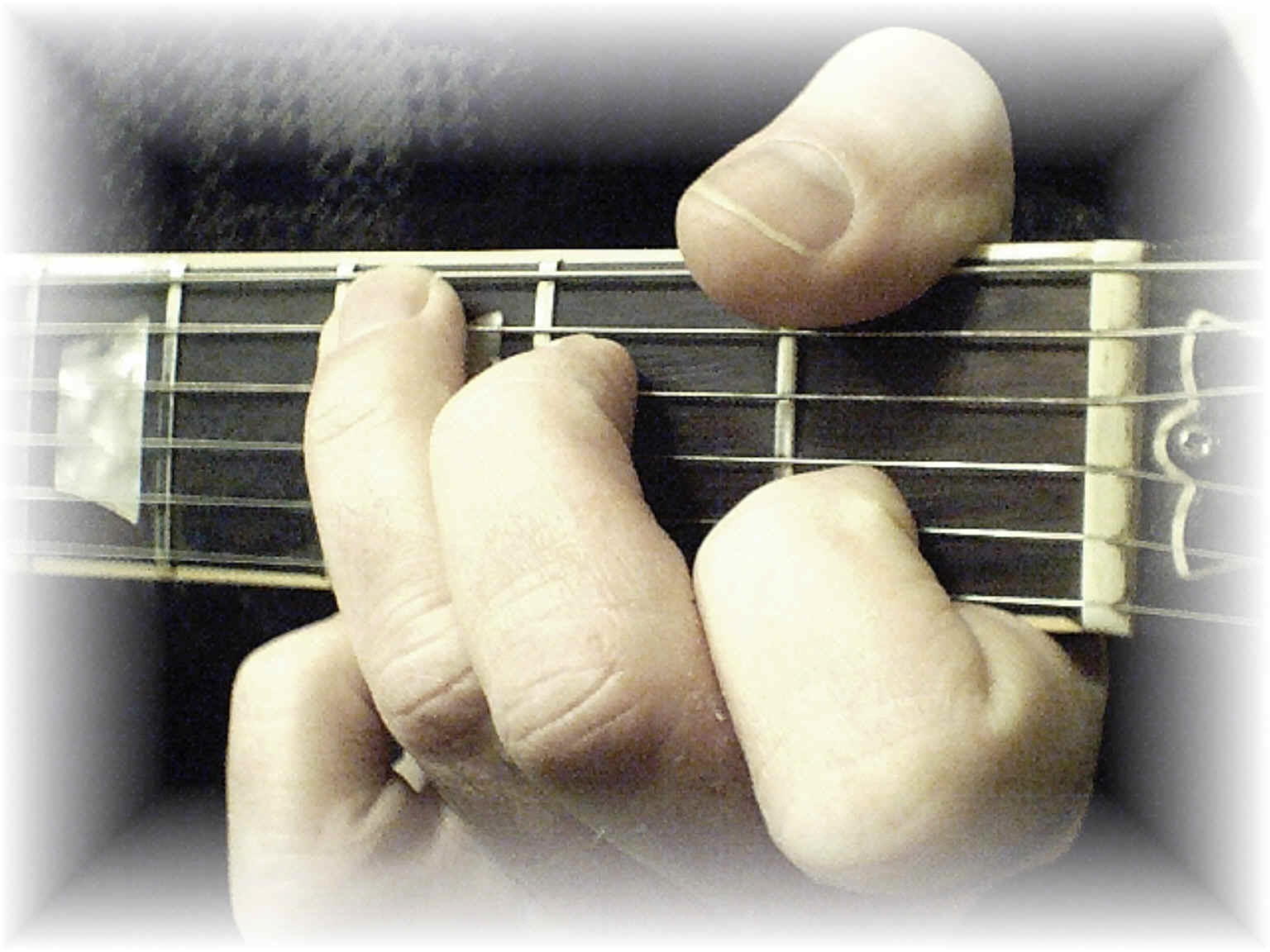 |
| Once again practice this chord until you have it memorized. Hold each note firmly, but try to stay relaxed. | |
| Listen |
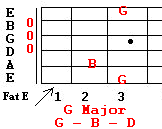 |
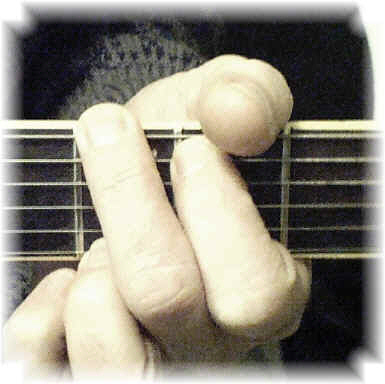 |
The D minor chord is shown below. The first box shows the fingers and the second box shows the notes. I personally use my 4 finger, but you can use your 3 finger.
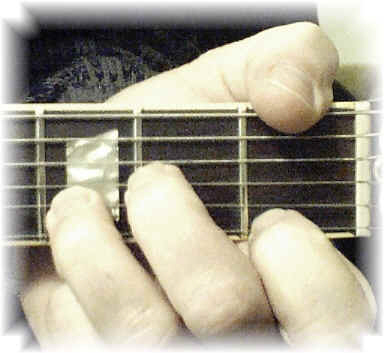 |
 |
| The E minor chord is shown below. The first image shows the fingers that play it and the second image shows the notes that make that chord up. | |
| The notes that make up the E minor chord are E - B- G. | |
| Listen |
![]() The open strings are the E G B and E strings. Those notes are left open and
played because they make up the E minor chord.
The open strings are the E G B and E strings. Those notes are left open and
played because they make up the E minor chord.
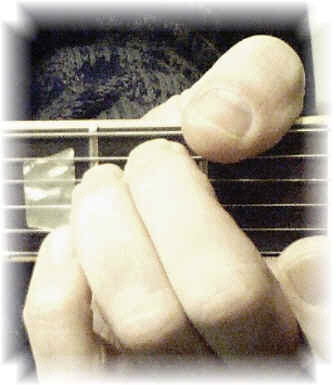
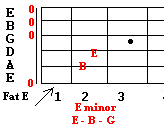
![]() The
first image is showing you play the F with the thumb on the Low
E string. The second image is barring the complete 1st fret with
your one finger. This is the root 6 E type Bar chord.
The
first image is showing you play the F with the thumb on the Low
E string. The second image is barring the complete 1st fret with
your one finger. This is the root 6 E type Bar chord.
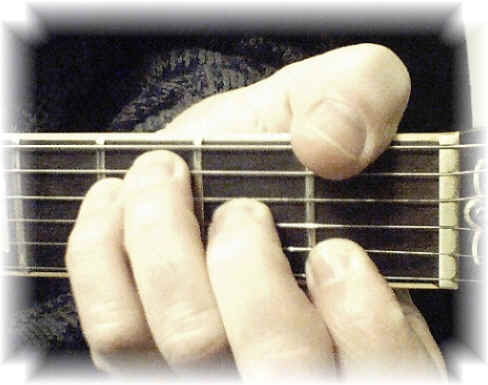
The Low E string determines what chord it will be. This is also a movable bar chord. You can move this fingering all over the fretboard to play different chords. If you moved this fingering to the 3rd fret, it would now be the G chord. If you moved it to the 5th fret, it would be the A chord, 7th fret B chord, 8th fret C chord, 10th fret D chord and so on. The note on the Low E string determines what chord it is. We will learn more about bar chords a little later on.
Notice that you can bar this chord. Your 1 finger covers the entire 1st fret from the 1st string to the 6th string.
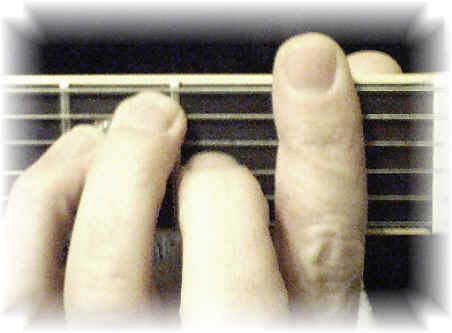
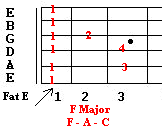
Once you have these guitar chords mastered, we will use them for our background rhythm. We will then begin to play leads over each chord. Each of the chords illustrated above are from the Key of C major. If you were to write your song in C, you could use these chords to get you started.
| The next thing I would like for you to learn will be hammer-ons, pull offs and bending. hammer-ons. Just a tip, you may eventually want to lay down your progressions on tape, so you can improvise over them. | |
| Check out the minor progression chart and play these progressions. | |
| Check out the major progressions and play these progressions. | |
| Check out all the chord lessons listed on top of the page. |
Good Luck,
From the Jam Room














